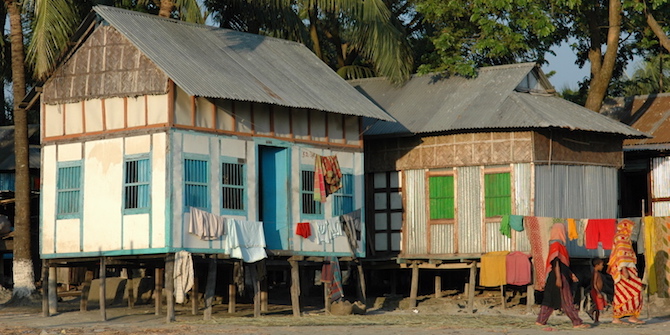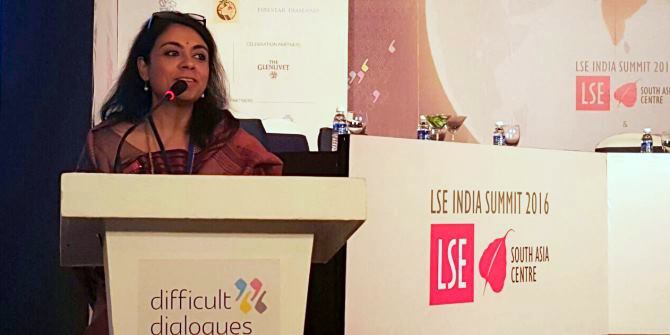Debojyoti Das (Sussex University), the author of a new ethnographic study on ‘Swidden Farming’ in Eastern Nagaland, explains what a focus on the everyday life of people in Nagaland can reveal about citizen’s interactions with the colonial and post-independent Indian state.
In August 2018 the prime minister of India Narendra Modi appealed for a new peace accord to end the long Indo-Naga armed conflict. The Naga’s of Northeast India have seen one of the longest and bloodiest struggles for self-determination in South Asia. In 1954, Jawaharlal Nehru, the first premier of India, appointed anthropologist Verrier Elwin adviser on tribal affairs to the administration of the North East Frontier Agency. In this role, Elwin prepared a dossier titled ‘The Philosophy for NEFA’ in 1959 that was based on five principles or panchsheel for tribal development by safeguarding their identity, cultures and natural resources. These principles of tribal development have gone hand in hand with counter insurgency operations and peace talks in the north eastern borderlands.
Violent insurrection is therefore not new to the Nagas. If we reflect back on the colonial period, the Naga swiddeners, who were not part of British administered territories, would carry on head hunting and slave taking forays on British administered villages. The colonial administration in the name of maintaining the rule of law, punished raiding Nagas during the British’s annual tours by burning of their villages and their graining. These embezzling raids were justified by colonial anthropologist administrators like John Henry Hutton (1885-1968) and James Philip Mills (1890-1960) as an attempt to bring ‘civilization’ and ‘improvement’ in the lives of foraging swidden cultivators.
Discussions surrounding ‘insurgency’ and ‘violence’ have dominated the narrative of newspaper columns, books and literature over the last seven decades following India’s independence. This discourse has had the consequence of silencing other voices that concerns the nation-states relationship with communities who live at the margins and how ordinary people experience and imagine the idea of the state.
It is this dominant narrative that I believe we should move away from. Instead we should look at the everyday life and politics in Nagaland through the framework of people’s livelihoods and their encounter with colonial and the post-independence Indian state, as well as the global framework of rural development. Following anthropologist Akhil Gupta, I contend that people themselves are no longer content to view the state as a necessary evil. Increasingly they make demands of it and expect it to act positively to improve their lives. In the study of South Asia this has led to what might appear at first glance as the ‘everyday state’ – how people actually interact with the state and what they expect from it. In contemporary Naga villages this has led to a new politics of resource use that has left footprints of the state through community driven development projects, such as plantation farms, orchards, timber gardens and terrace paddy plots all promoted to curtain semi-nomadic swiddeners who defy state surveillance.
Through the study of the politics of swidden development, we can understand the nature of state violence, missionary modernisation and ethnic identity questions in Naga society. Understanding people’s everyday engagement with the Indian state through democratic forms of ballot politics, development money, patronage, corruption and the agency of ordinary Naga farmers can help us understand the microcosm of people’s everyday engagement with the state.
For example, in my new book I chronicle that change in food habits and choice of crops cultivated in eastern Nagaland. This is achieved through a systematic state-driven incentive to grow wet terrace rice that are linked to strategies of electoral politics that has altered community’s relationship with the development state in the frontier. Both the state and the Baptist missionaries emphasise rice cultivation over coarse millets and buck wheat as the ‘crops of the so-called uncivilised people’.
This has led to a major transformation in swidden cultivation in Nagaland. They are now hybridised through inter-plantation of terraced plots, orchards, timber farms and agro-forestry programmes that have significantly changed land use pattern and has entrenched the presence of the state in the everyday life of Nagas through subsidies, seed supplies for farmer’s test plots. Villagers regularly come in contact with states officials, such as engineers, bureaucrats and project staff during farm training and demonstration programmes where they gain knowledge of crop calendar issued by ‘experts’ who represent the will of the state.
Swidden can be defined as the ‘slash and burn’ farming practices prevalent across the tropics from Latin America to Africa and Vietnam in South East Asia. Globally it is estimated that 280 million hectares of land is under cultivation or left fallow by swidden cultivators. In the North Eastern part of India, swidden is locally known as jhum. My study is located in a region and among people who through their social lives and livelihoods (including their swidden cultivation), have become, as Anna Tsing puts it, ‘icons of the archaic disorder that represents the limit and test of state order and development’ (Tsing 1993: 28). The remote Naga villages that are the ethnographic focus of The Politics of Swidden Farming are in this sense represented simultaneously as a political-administrative border, an agricultural margin and a moral frontier. The kinds of colonial and postcolonial projects that have sought to regulate and control such borderland communities, whether they were irrigation projects, roads, settlement schemes or plantations, are well-known. What is rarer is the kind of longitudinal account of the interplay of state power, Christian mission and local communities, examined also through the complex relationships between and within these Nagaland villages themselves.
Despite the organisational force of colonial administration, one of the surprising lessons is that perhaps the greatest change in the village community I lived in during my research was wrought through self-transformation initiated by Christian (primarily Baptist) missionization by evangelists from neighbouring rice-growing communities. Many accounts of the evangelisation of Indian communities show Christian adaptation to existing cultural and agricultural systems, as church festival and ritual systems are moulded to an existing popular religious culture to produce forms of religious synthesis.
In this account of Nagaland, conversion to Christianity brings new order and discipline that involves the transformation of cultural and agricultural systems; a disinvesting from the old sources of social power and investing Church-based institutions with authority including in matters such as labour control as well as connecting outwards to aspects of Naga nationalism’s cultural forms. Time and its reorganisation in terms of calendrical systems turns out to be a critical linking medium of religious, social and agricultural change. New agricultural practices, especially irrigated rice, become stores of symbolic capital and social differentiation.
It is perhaps unsurprising that development project planners with a characteristic lack of historical sensibility and the tendency to dichotomise the recent traditional past and the technologically improved future fail to perceive the dynamic systems into which their interventions are introduced. And so it is with the Nagaland Environment Protection and Economic Development (NEPED) project which for me first encapsulated the conundrum of swidden farming. Project goals of forest regeneration to produce ‘carbon sinks’ and to counter global warming are realised through incentivising swidden farmers – simultaneously the most knowledgeable custodians of local biodiversity and its principal threat – to grow horticultural and plantation cash crops and thereby achieve sustainable swidden farming. But contrary to expectations, the transition from swidden to agro-forestry does not bring livelihood improvement for all. Instead the development project is another chapter in the long story of intersections between diverse local interests and outsider ambitions for cultural-agricultural change; and in this case new opportunities are found to encourage forms of development brokerage, elite capture and the privatisation of benefits.
A study of the everyday life of those in Nagaland therefore demonstrates how contemporary agrarian development reflects this complex colonial heritage, including linkages between the state and village elites. Few accounts of remote borderland regions show with such attention to historical and local context how technologies of cultivation and technologies of rule are interconnected, how marginality is reproduced through regimes of development alongside internal differentiation and tension within communities. By paying attention to what is happening in the landscape and simultaneously reading the landscape as a palimpsest of political and cultural histories, we can understand properly the interweaving of changes in political, economic and religious relations.
This article gives the views of the author, and not the position of the South Asia @ LSE blog, nor of the London School of Economics. Please read our comments policy before posting. Featured image: Stack of wood. Credit: Pexels.







